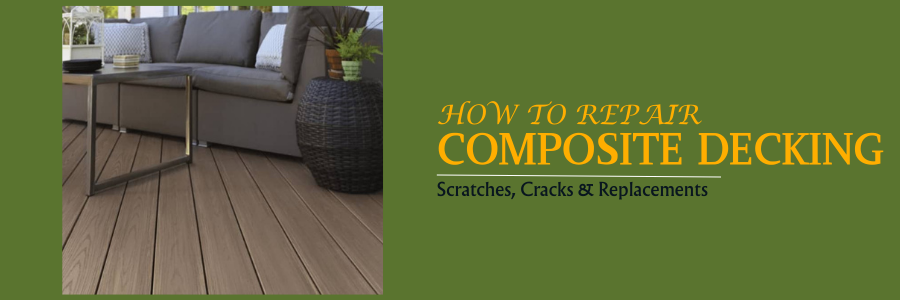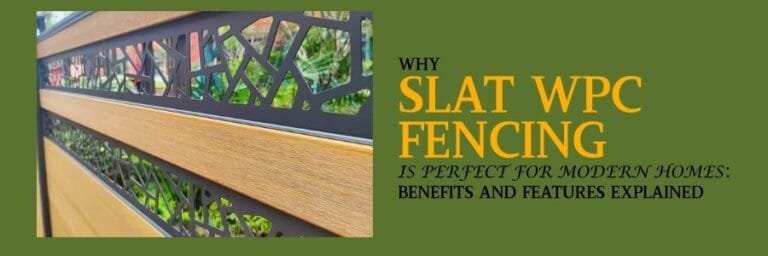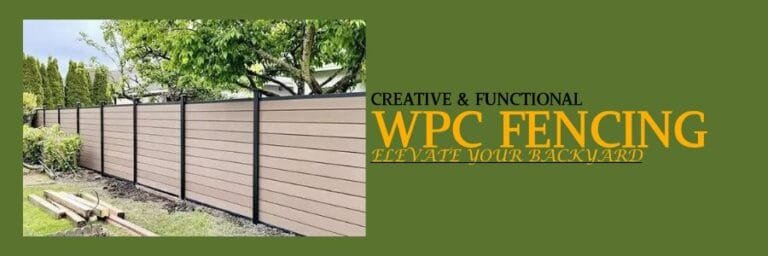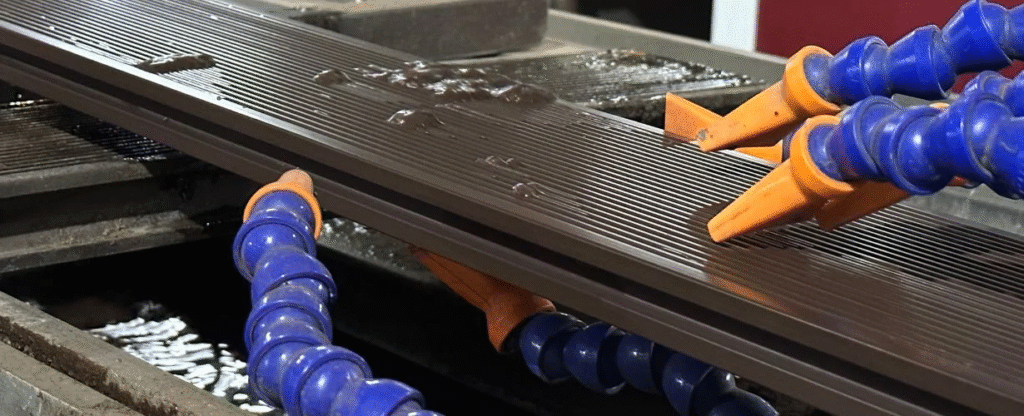
Composite decking is known for being durable and low-maintenance, but like any outdoor surface, it can still get scratched, cracked, or damaged over time.
Whether it’s from moving heavy furniture, dropping tools, or natural wear and tear, small issues can appear.
The good news is that most problems can be fixed without replacing the entire deck. In this guide, we’ll walk you through simple ways to repair composite decking, from smoothing out minor scratches to replacing damaged boards, so your deck stays looking great for years to come.
Understanding Composite Decking Durability
Composite decking, like WPC (Wood-Plastic Composite), is built to last longer than traditional wood. It is made by combining wood fibers with plastic, creating a strong material that can handle outdoor weather for many years.
This blend makes the boards less likely to crack, warp, or break down over time, even when exposed to sunlight, rain, or temperature changes.
Related article: Wood vs. Composite Decking: Which One Should You Choose?
Why WPC Is Designed to Be Low-Maintenance?
One of the biggest advantages of WPC is that it needs very little upkeep compared to natural wood. It is naturally resistant to moisture, so it will not easily rot or swell when wet.
The material also resists warping and damage from termites, which are common problems with regular timber.
This means you do not need to paint, stain, or seal it regularly to keep it looking good. A simple wash with water and mild soap is often enough to maintain its appearance.
Common Causes of Damage
While WPC decking is durable, it is not completely indestructible. Heavy impacts from dropping large or sharp objects can cause dents or scratches.
Dragging heavy furniture across the surface can also leave marks.
Burns from hot items, such as barbecue embers, can leave lasting damage, and certain spills may cause stains if not cleaned quickly. In very hot weather, the boards may expand slightly, so proper spacing during installation is important.
Early Signs You Shouldn’t Ignore
Keeping an eye on your decking helps you address small problems before they get worse. If you notice the surface looking dull or faded, it could be a sign that it needs cleaning or UV protection.
Soft spots may indicate water damage beneath the surface, while deep gouges can weaken the material over time.
Loose fasteners or boards that move when stepped on should be fixed immediately to prevent safety hazards.
Minor Damage: Quick Fixes You Can Do Yourself
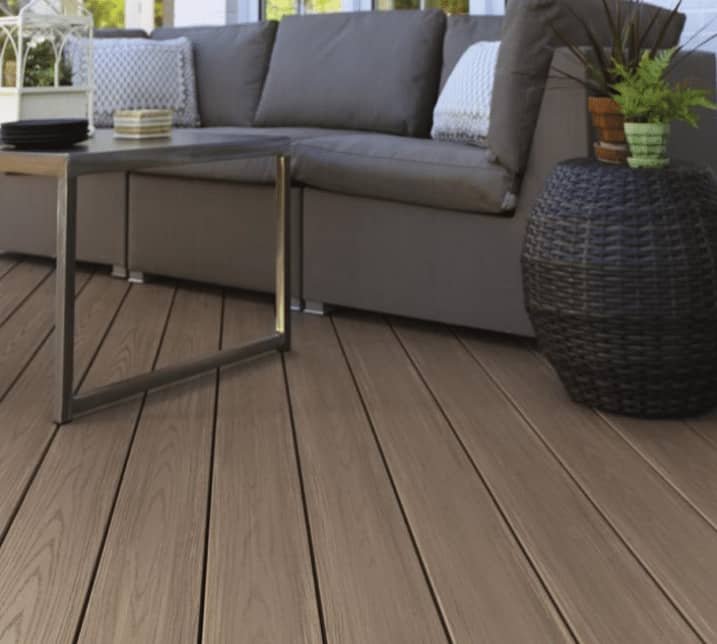
Before you start, gather a soft brush, a bucket of warm water with mild dish soap, a microfiber cloth, a composite safe cleaner if you have one, painter tape, disposable gloves, and a small plastic putty knife. Work on a cool, dry day and test any method on a hidden spot first.
Surface Scratches or Fading
- Clean the area with warm soapy water and a soft brush, then rinse and let it dry. Removing grit prevents new scratches while you work and lets you see the true condition.
- Decide if the scratch is light or deep by running a fingernail across it. Light scuffs usually sit on the surface, deep gouges may need filler or board replacement.
- For light scuffs on uncapped boards, warm the surface gently with a heat gun on low while moving constantly and keeping several inches of distance. Buff with a microfiber cloth. Gentle heat relaxes the plastic so shallow marks blend back in.
- For capped or co extruded boards, use the manufacturer approved polish or restorer and follow the label. The protective cap should not be sanded and needs products made for that surface.
- For general fading, deep clean with a composite safe cleaner and a soft brush, then rinse well. Dirt film and UV oxidation can mute color and a proper clean often restores clarity.
Stains from Food, Oil, or Mold
- Blot spills right away with paper towels. Do not rub.
- Rinse the area with water, then scrub with mild dish soap or a composite safe cleaner using a soft brush along the board direction. Rinse again.
- For oily stains that remain, apply a composite safe degreaser, wait as directed, scrub lightly, and rinse thoroughly.
- For mold or mildew, use an oxygen bleach cleaner made for composites, let it sit per instructions, scrub the joints and gaps, then rinse well.
- Let the area dry fully and improve airflow under the deck if possible.
Filler for Small Cracks or Chips
- Clean and dry the damaged spot completely and tape around it with painter tape.
- Check your board type. If it is capped, use a color matched repair kit or filler recommended by the manufacturer. If it is uncapped, a composite repair putty or epoxy made for WPC can work well.
- If the board is uncapped and the damage has shiny edges, lightly scuff only inside the defect with fine grit wrapped around a small block, then vacuum dust. Avoid touching the surrounding surface.
- Mix the filler if required and press it into the crack or chip with a plastic putty knife. Slightly overfill.
- Level the surface by drawing the knife flat across the repair. Remove tape before the filler skins over.
- Allow full cure per the label, then gently buff with a soft cloth.
Moderate Repairs That Require Extra Tools
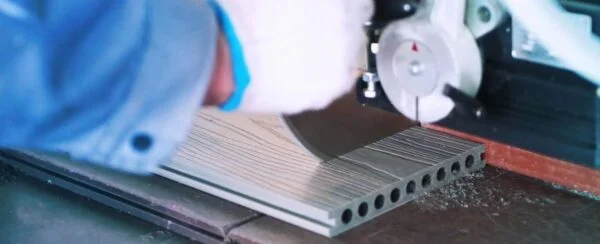
Fixing Burn Marks or Deep Cuts
- Clean the damaged board with soap and water to remove dirt.
- Lightly sand the affected area with fine-grit sandpaper, keeping strokes even.
- For deeper burns or cuts, use a heat gun to carefully melt and blend the surface, moving the gun constantly to prevent overheating.
- If the damage is too deep to repair, remove the damaged board by loosening the fasteners and replace it with a matching one.
- Secure the new board using the same fastening system as the rest of the deck.
Repairing Loose Boards or Noisy Planks
- Inspect the loose or noisy section to find the exact movement point.
- Check for damaged clips or screws and remove any broken hardware.
- Refasten the board using clips or screws designed for your specific WPC decking system.
- Test the board by stepping on it to ensure it no longer moves or squeaks.
Addressing Gaps from Expansion/Contraction
- Measure the gap between boards to determine if it exceeds the recommended spacing from the manufacturer.
- Remove the affected boards carefully, starting at the edge of the deck.
- Realign the boards with proper spacing, following the installation guidelines.
- Reinstall the boards with compatible fasteners, ensuring even gaps across the surface.
When to Replace Boards: Severe Damage or Structural Issues
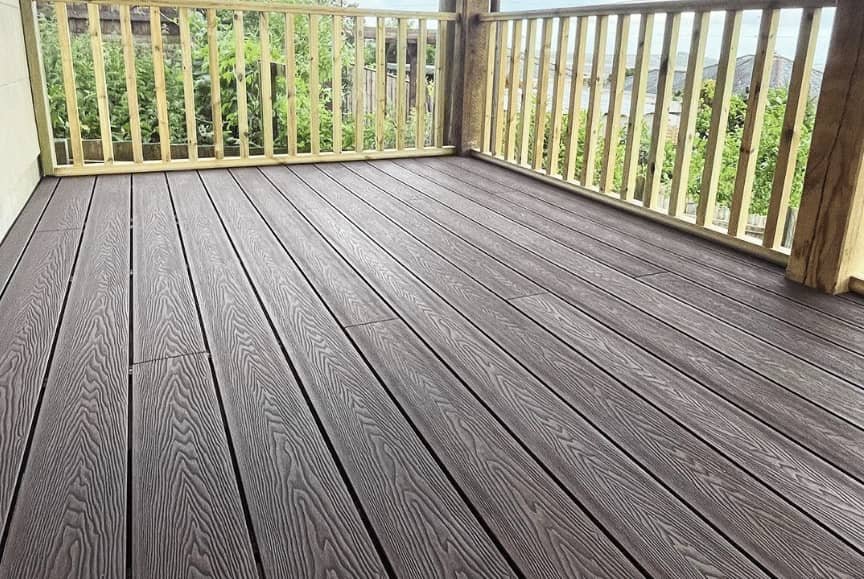
Sometimes, damage to composite decking goes beyond what you can fix with fillers, sanding, or cleaning. In these cases, replacing the boards is the safest and most effective option.
Water Intrusion or Mold Underneath Boards
If you notice dark spots, a musty smell, or visible mold under the boards, it can mean water is getting into the substructure. This can weaken the support beams and cause long-term structural issues.
At this stage, the affected boards should be removed so you can inspect and repair the frame before installing new decking.
Widespread UV Fading or Board Swelling
Older, non-capped composite boards are more likely to fade, lose color, or swell over time. If the fading is consistent across most of the deck or the boards feel soft or swollen, replacement is often more practical than trying to restore the surface.
Newer capped WPC boards offer better UV resistance and long-term durability.
How to Safely Remove and Replace WPC Boards?
- Gather the right tools: You will typically need a drill, compatible fastener removal tool, pry bar, and safety gloves.
- Clear the workspace: Remove all furniture, planters, or objects from the deck.
- Remove fasteners: Loosen screws or clips holding the damaged board. If the hardware is rusted or stuck, use a penetrating oil to loosen it.
- Lift out the damaged board: Work slowly to avoid damaging nearby boards or the frame.
- Inspect the substructure: Look for rot, mold, or loose joists. Repair or reinforce as needed before adding new boards.
- Cut replacement boards to size: Match the length exactly, and if possible, use boards from the same manufacturer to ensure a consistent look.
- Install the new board: Use fasteners recommended by the manufacturer, making sure the spacing matches the rest of the deck.
- Check for level and alignment: Step on the new board to confirm it is secure and even with the surrounding boards.
How to Prevent Future Damage?
A well-maintained composite deck can last decades, but even durable WPC boards benefit from a few protective habits. Preventing damage is often easier and cheaper than repairing it later.
Smart Furniture Use and Protection Pads
Heavy furniture can leave scratches or dents if dragged across the surface. Always lift furniture instead of sliding it.
Adding rubber or felt protection pads to the legs of chairs, tables, and planters will reduce direct contact with the boards, preventing surface marks.
Routine Cleaning and Seasonal Inspection
Cleaning your deck regularly keeps dirt, mold spores, and stains from setting in. Use a mild detergent and soft-bristle brush to clean the surface every few weeks during peak use.
At the start and end of each season, inspect your deck for loose fasteners, small cracks, or color changes so you can address problems before they get worse.
Use of Caps, Covers, or Rugs in High-Wear Areas
High-traffic zones like entryways or spots under a grill can wear faster than the rest of the deck.
Outdoor rugs, furniture covers, or caps for posts and railings help shield these areas from UV exposure, grease, and impact damage. Make sure any rug or cover is designed for outdoor use to avoid trapping moisture.
Choosing Quality Boards like KR WPC with Enhanced Protection
Starting with a durable product is the best form of prevention. High-quality boards like those from KR WPC come with enhanced UV resistance, moisture protection, and a protective cap layer.
This reduces fading, swelling, and surface wear, giving your deck a longer life and keeping it looking newer for years.
Conclusion: A Durable Deck Is One You Maintain Smartly
A composite deck is a long-term investment, and its durability depends on how well it is maintained.
Taking care of small repairs as soon as they appear, such as fixing scratches, tightening loose boards, or filling small gaps can significantly extend the life of your deck while keeping it safe and visually appealing.
Choosing quality materials from KR WPC further ensures that your deck is built to last, with strong resistance to UV rays, moisture, and heavy use.
Backed by our product longevity guarantee and expert support, you can enjoy the confidence of knowing your deck will remain a beautiful, functional space for many years to come.
FAQ
Can composite decking be repaired, or does it need replacing?
Most composite decking damage can be repaired without replacing the entire board, but severe cracks or structural issues may require a full replacement.
How do you fix deep scratches in WPC decking?
Deep scratches can be fixed by lightly sanding the area, using a heat gun to blend the surface, or replacing the damaged board if the mark is too deep.
Are composite deck fillers effective for small chips or cracks?
Yes, composite deck fillers or color-matched repair putty can hide small chips and cracks effectively when applied correctly.
Can I sand or paint composite decking?
Sanding is only recommended for certain repairs and should be done carefully. Painting is generally not advised, as it can void warranties and affect durability.
What tools do I need to repair composite decking?
Basic repairs often require a cleaning brush, filler or putty, and a putty knife. Larger fixes may need a drill, screws, a sander, or even a heat gun.

